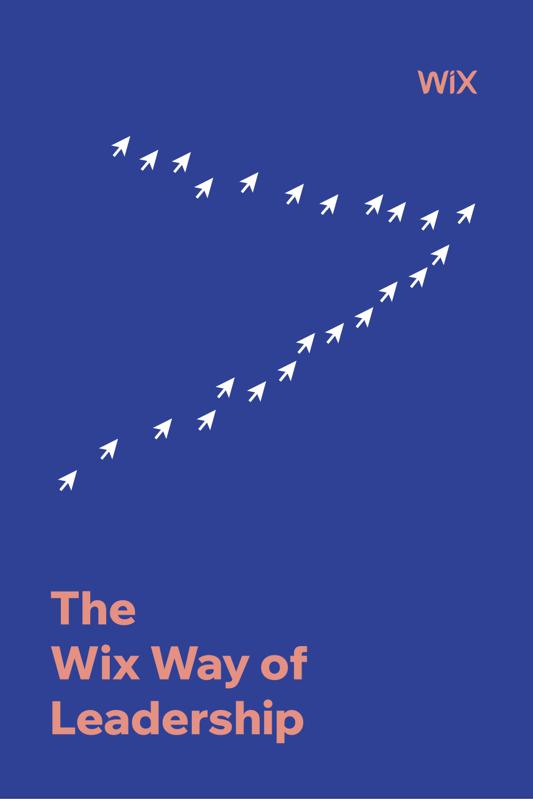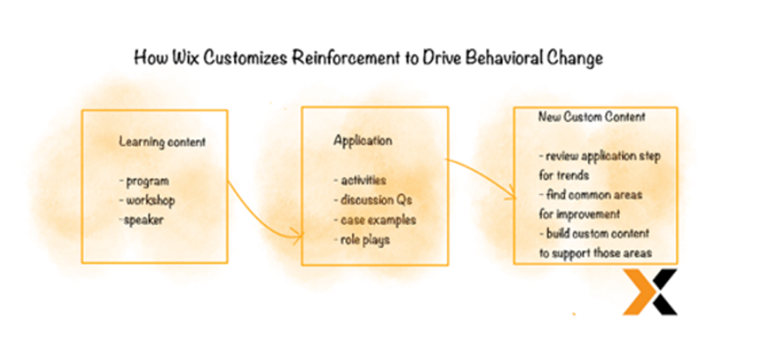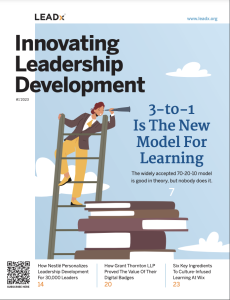
The initial idea for Wix came to be in 2007 while its three founders sat on the beach in Tel-Aviv talking about how unnecessarily difficult and frustrating it was to build their website. At the time, they were constructing a website together for an entirely different start-up. Their conversation inspired them to shift gears though, and suddenly. They dropped their initial start-up and focused instead on creating a platform where anyone could easily build their own website without coding or design skills.
 The result was Wix, a company that took flight, and quickly. They hit their first million users in 2009, 50 million users in 2014, and now they’re at 200 million users. Throughout COVID, the Wix platform has saved countless businesses by making it simple for them to build out and implement an online component.
The result was Wix, a company that took flight, and quickly. They hit their first million users in 2009, 50 million users in 2014, and now they’re at 200 million users. Throughout COVID, the Wix platform has saved countless businesses by making it simple for them to build out and implement an online component.
To grow a company to over 5,000 employees and 1,000 leaders distributed around the globe, and to do so in just a decade, you of course need great leaders. And that’s exactly what Wix has done—focus on developing great leaders.
For this article, Wix’s Head of Global Learning and Talent Development, Dr. Eli Bendet-Taicher, PhD, and Skills Development Manager, Brooke Rodriguez, broke down how Learning & Development plays a vital role in Wix’s multifaceted development program for the Customer Care function, the program’s key components, and what makes it unique.
Here are six key ingredients to their success.
1. Tune In to the Values and Culture on Both a Macro and Micro Level
Not all learning professionals are skilled at connecting their training directly to core company values, but Bendet-Taicher and Rodriguez see culture and values as the essential starting point to leadership development at any company. Bendet-Taicher put it this way: “Whenever I start a new job in employee development, the first thing I do is seek to understand the culture. Because nothing I did at a previous company resembles the next company. Everything will be completely different, and it all comes back to the leadership, the values, and the culture of that specific organization.”
Bendet-Taicher and Rodriguez put this idea to practice at both the macro- and micro-level. Big picture, they work closely with Organizational Development to get to know the new competency model well and they have deep conversations with senior leadership about the culture. Bendet-Taicher described their approach as follows: “A lot of management training will contain the same kind of topics: how to do one-on-ones, how to interview, how to hire, how to give feedback. These are the universal topics of management training, but effective training is less about these general topics than it is about how those topics connect to your company’s culture. It's about how to be a manager at this specific company on this specific team with these specific people. To get to this level of understanding, you really need to do your research and talk to people. Not just the CEO and senior leadership. It's about talking to all levels at different departments.”
2. Build Rapport to Personalize at Scale
Rapport with other people, teams, and departments is not talked about as part of learning design as often as it should be. The more effort skills development professionals put into building relationships across the organization, the more readily people at all levels of the organization will engage with and adopt their training. And, those relationships will lead to valuable feedback which will improve future programs.
Here’s how Rodriguez described their approach: “Focus on building rapport and being the best collaborator ever. Much of our success is dependent on the information that we're getting from all different parts of this huge tech company. I am at the mercy of how people want to work with me and so I want to work closely with them, their examples, and the intricacies of their work. Unless I'm getting good information, I'm not going to succeed. Building rapport sounds obvious, but people aren't that great at it. How are you actually communicating and with who? Build rapport in the right way across different functional areas, and you start to get what you need to be successful in return. Then you create a virtuous cycle where you're getting the information you need and you’re using it to give the best training in return.”
3. Have One Central Piece of Content to Lean on
A central piece of content can serve as a kind of hub that all training connects back to. At Intuit, they use a playbook that leaders can turn back to for training-based strategies, real case examples, and strategies for on-the-job application. At Wix, their central piece of content is an internal book: The Wix Way of Leadership.
The Wix Way is just one great example of how the Organizational Development and Learning & Development teams work closely together. The Organizational Development team—whose interview will be Part II in this series on People Development at Wix—created, edited, and updated this book, which applies to all leaders at Wix. The Learning & Development team then uses components of this book as a guiding standard as they create different learning outputs to address on-the-job behavior. Having The Wix Way of Leadership as an anchor ensures that learning can occur, whether that be in product or skills development, without contradicting the core principles and values of Wix.
Rodriguez described how the book drives their training and their culture within Customer Care: “The book is all about how we behave. We apply it to everything. The book is set up in a way that explicitly says that Wix wants everyone to be a leader. Closely tied to the philosophy in the book is the fact that we have small teams. That's intentional. We do that so that individual people can make decisions for their team. This is about being employee-first. Wix believes that if the employees are treated and respected as leaders, they will want to be here.”

4. Apply the 80/20 Rule to Maximize Your Impact
The 80/20 rule says that 80% of our success is dictated by 20% of our time, effort, and decisions. Wix applies this rule directly to their learning approach to help simplify and maximize their impact. As Bendet-Taicher and Rodriguez seek insights from employees across the Customer Care organization, at all levels and all departments, an overwhelming number of problems inevitably surface.
The 80/20 rule helps Bendet-Taicher to narrow in and address the problems that will have the biggest impact. “We constantly drive for feedback, feedback, feedback. We measure the temperature very frequently. Can we know exactly what's happening with all 5,000 plus employees? No. But on the other hand, what's the alternative? I lean on the 80/20 rule in this circumstance. I always say, let's take a look at the top 20 highest impact issues that we have and focus on those.”
5. Double Down on Reinforcement of Learning to Build Habits
Bendet-Taicher and Rodriguez maximize the impact of their training by reinforcing key learnings. They don’t just let responsibility for application fall on their leaders; they actively set up ways of reinforcement that fit the needs of those leaders. Rodriguez said, “What a lot of companies miss is the reinforcement element. Sure, you can go listen to a workshop or a speaker. And someone's like, ‘That was great.’ But then what? So much falls on somebody's manager, or on themselves, having some reason to practice this. So we'll take them through some content, but then give them activities, discussion questions, case examples, role plays, and things that we want them to work on over the next month. Then, through their application, we start to see trends in what they need help with. For example, we’ll notice they need help phrasing feedback in a certain way. We then make an infographic with phrasing help, that they can practice with.”

6. Deliver Training Tailored to a Specific Team’s Needs
Wix delivers on key audiences, hot topics, and stages in an employee's development. On top of that, the Learning & Development team delivers constant customized training to individual teams within Customer Care. For example, Customer Care experts are given allocated time on a weekly basis where they are taken off live channels to complete new training, or refresh on skills and topics they need to improve on.
Rodriguez described this combined approach of Organizational Development efforts and Learning and Development efforts as follows: “We have three buckets that I think about. The first bucket is programs that follow a linear path in career progression (i.e., new manager training). The second bucket is self-driven programs. Employees choose to enroll in training to further theirself in a specific area. The third bucket is specialized training which comes in a couple of forms, but these are each prescribed based on a diagnosed need—that need could be a product need that's rolling out, that can be an initiative that senior leadership really wants to push out, or it can be the need of a specific leader of a specific team.”
Each bucket is critical to their success with developing the workforce personally and professionally, but the third bucket is by far the most unique and difficult to pull off. It requires, on the one hand, thorough conversations with individuals, and on the other hand, careful attention to the bigger picture data. Rodriguez said, “We have conversations with specific people and teams in focus groups. A lot of analysis happens beforehand. Because a lot of times people think they know the problem or they'll say everyone is struggling with this. But, I have to step back to see, is that true? Is everyone struggling with this? I have to do my due diligence. What data do they have? With this level of preparation, we can step into scheduled meetings and really offer a different voice.”
Individualization Is the Key to Bringing These Strategies To Life At Your Organization
All these strategies share something in common: Wix’s development of its workforce is built around conversations and feedback from the entire organization. Not just senior leadership or the CEO. By taking the time to build and deepen their relationships throughout the organization, Bendet-Taicher and Rodriguez, in close partnership with the Organizational Development department, are able to build out programs and learning reinforcement in a way that maximizes their impact on each team.
This interview is Part I of a two-part series on People Development at Wix. The next interview will feature the Organizational Development team.






